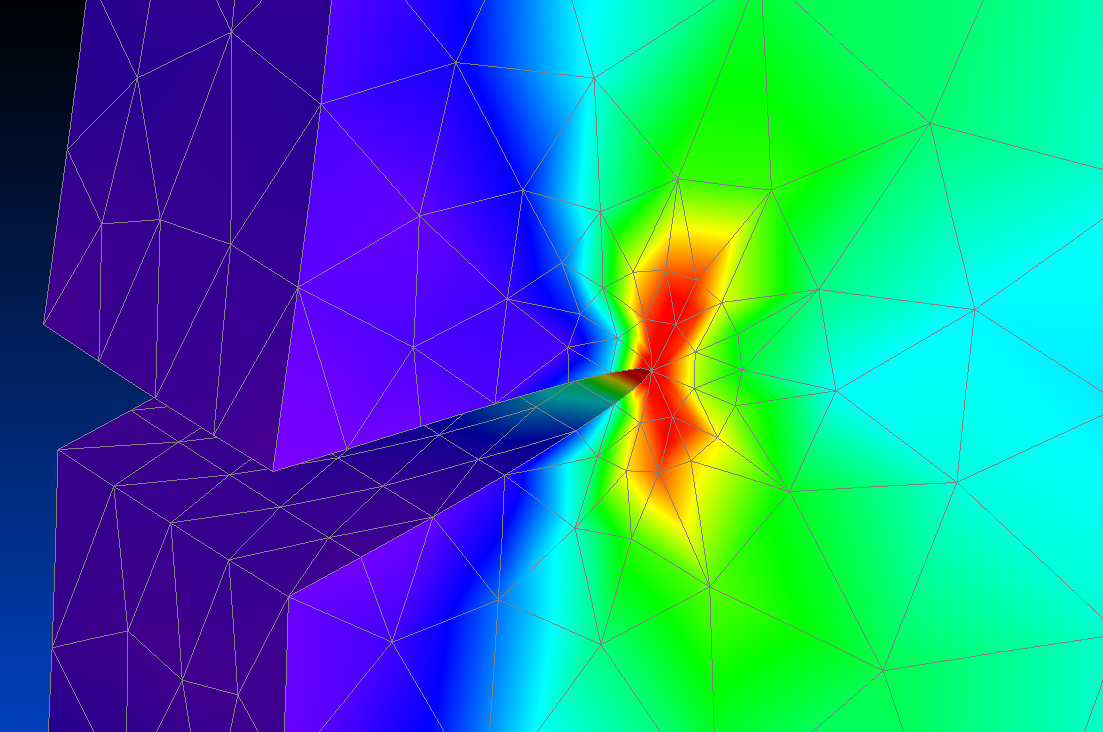Topics
Overview
Finite Element Analysis (FEA) is the process of transformming the governing partial differential equations (PDEs) of a given problem - whether it be thermal, structural, or any other field of analysis - into systems of simultaneous equations that computers are ideally suited to solve.In practical terms, FEA applies loads and constraints to a geometric representation of an object with defined material stiffnesses, and from this, it predicts the displacements at thousands, or even millions, of locations throughout the object. It then uses these displacement predictions to compute predicted stresses and strains in it.
This introductory chapter is short. It first provides a short historical background of FEA, and it then reviews specific topics in advanced math that will be used in later webpages.
Notation and Conventions
It is common in mechanics to represent scalars with regular, normal-weight variables. For example, mass is represented by \(m\). Vectors, tensors, matrices, etc are represented by bolded variables such as \({\bf v}\) for velocity. Furthermore, vectors are represented by lowercase bold variables as just shown for velocity, while higher-rank quantities, such as stiffness tensors, are often represented by uppercase bold variables, \({\bf C}\).Of course, exceptions do exist. Examples include the use of \(\boldsymbol{\sigma}\) for stress and \({\bf X}\) for the vector of coordinates of a point on an object in the undeformed state.
And speaking of coordinates, it is worth emphasizing the notation convention for coordinates and displacements. As just stated, \({\bf X}\) is the vector of coordinates of a point on an object in its undeformed state. \({\bf x}\) is the corresponding vector of coordinates in the object's deformed state. And \({\bf u}\) is the vector of displacements. So \({\bf X} + {\bf u} = {\bf x}\). Also, \(u\), \(v\), and \(w\) are often used as the individual components of the displacement vector in the \(x\), \(y\), and \(z\) directions, respectively. So \({\bf u} = (u,v,w)\).
